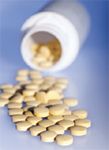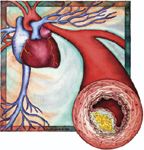Statins and cancer: Discovering their role in treating gynecologic cancers
HMG-CoA reductase inhibitors, commonly referred to as statins, have gained popularity for their ability to effectively lower cholesterol levels in patients with CV disease, but new roles for statins may be on the horizon.

Key Points

Cholesterol is a naturally occurring compound that is essential for the body's normal physiologic processes.1 Dietary cholesterol is ingested mainly through animal products, such as dairy products, meats, and eggs, but is also found in small amounts in plants and fungi. The body can also produce cholesterol on its own in the liver. The biosynthesis of cholesterol is mainly via the entry of acetyl-CoA into the HMG-CoA reductase pathway. The body uses cholesterol to form cell membranes and synthesize steroid hormones. Because cholesterol is largely hydrophobic and is insoluble in blood, it is carried along with fats within molecules coated with proteins, called lipoproteins. Low-density lipoprotein (LDL) cholesterol is commonly referred to as the "bad cholesterol" and is thought to be one of the main contributors to CV disease. High-density lipoprotein (HDL) cholesterol is commonly referred to as the "good cholesterol" because it is believed that HDL works to remove excess cholesterol from the blood and sends it back to the liver for removal from the body.2
In the United States, more than 30% of the population has elevated LDL cholesterol, a known risk factor for CV disease.3 In addition, CV disease is the leading cause of death in adult women in the United States.4 Hypercholesterolemia has been directly linked to numerous CV diseases, including angina pectoris, myocardial infarction (MI), transient ischemic attack (TIA), stroke, and peripheral artery disease.

Statins have become the most commonly prescribed medication for the treatment of hypercholesterolemia because of their efficacy in lowering LDL cholesterol and their favorable safety profile. The rate of statin use among high-risk patients in the United States increased from 4% in 1992 to 19% in 2002.6 Commonly, initiation of treatment with statins lowers LDL cholesterol by an average of 1.8 mmol/L, which yields a 60% decrease in cardiac events and a 17.5% decrease in risk of stroke.7 In addition, A Study to Evaluate the Effect of Rosuvastatin on Intravascular Ultrasound-Derived Coronary Atheroma Burden (ASTEROID) showed that achieving lower-than-target LDL values through aggressive treatment with rosuvastatin produced disease regression within the coronary arteries.8
